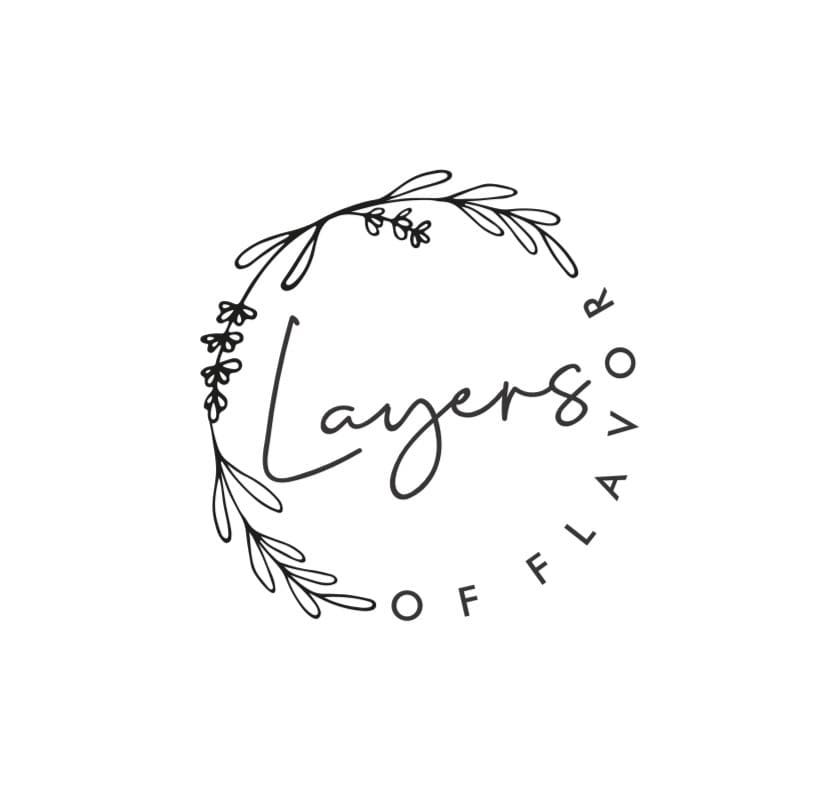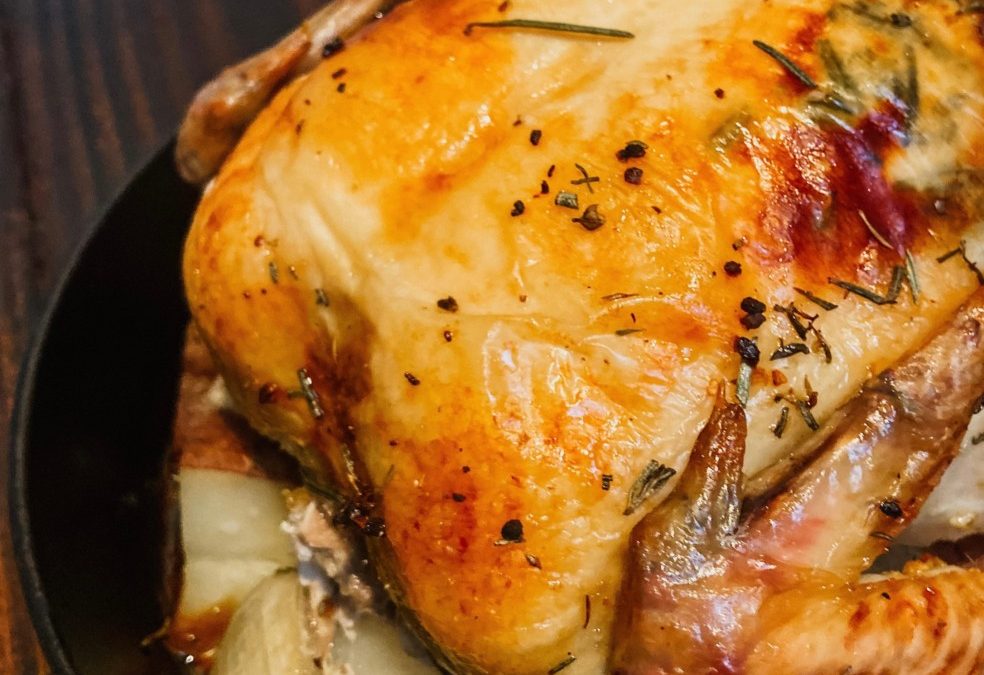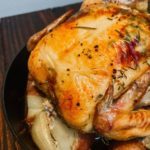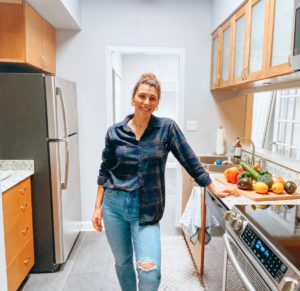There’s something about the idea of roasting a whole chicken to me that feels very old school and classic, yet is also very simple and elegant in a way. I think it has become a lost skill, as we now tend to cook in smaller amounts and not use the whole chicken. As someone who enjoys tackling new skills in the kitchen, I was very excited to take on making my first whole roasted herb chicken.
This chicken turned out as well as I could have hoped for, and it was much less difficult and time-consuming than I would have expected. And with each time making it, I think the process will go faster and be more successful each time.
I have gleaned ideas from many many people over the last year about the best way to make a chicken, and I think these combined tips are what made this a success. Samin Nosrat, the author of Salt Fat Acid Heat, explains that cooking a bird that is not at room temperature sets them up for unevenly cooking the meat. If the whole chicken is not at room temperature, the inside of the bird will not heat through at the same rate that the outer meat does. Therefore, it is important to set your chicken out 2-3 hours before you plan to cook it.
Also, I have seen many people, including my mother, cover the chicken with a butter-soaked cheesecloth to prevent it from drying out. This also helps create a barrier for the skin so that it doesn’t burn, especially the wings.
Roasting your chicken on a bed of vegetables and spices instead of a rack significantly increases the flavor throughout the meat. The juices from the chicken soak into the vegetables while the roasting vegetables also layer in flavor to the bird in the time that it is all roasting together. Additionally, you have an easy side to go along with your chicken with no extra work.
Lastly, your whole chicken carcass and leftover vegetable scraps can be used to make insanely nutrient-rich bone broth. Instead of throwing it all away, it is an incredibly easy way to use every bit of your food and create a flavorful base for meals in the future.
Now for actually making your whole roasted herb chicken-
To start, bring your bird to room temperature for 2-3 hours before you plan to roast it. While this is warming, you can prepare your vegetable and herbs
A cast-iron skillet, dutch oven, or any oven-safe dish that is at least several inches deep will work to roast the chicken in. Toss the vegetables in olive oil, salt, pepper, and place fresh rosemary and thyme on it.
To prepare the chicken, pat dry and stuff the cavity with onion, fresh herbs, and half a lemon. Create two pouches between the meat and the skin and place two herbed slabs of butter in between. Then create an herb rub of olive oil, garlic, and spices to rub into the whole chicken. After the legs are tied together and the chicken is placed on top of the vegetables, tuck the butter-soaked cheesecloth around the whole bird.
Cook the chicken at 400° F for 90 minutes. Using an instant-read thermometer check the temperature of the meat. The breast should be cooked to 170° and the thighs cooked to 180°. At 90 minutes, remove the cheesecloth. If the wings are looking significantly more browned than the rest of the bird, cover them with small pieces of tin foil for the remainder of the time. Let the bird sit for 15 minutes before cutting into it.
Whole Roasted Herb Chicken
Equipment
- large pot or skillet that is oven safe
- cheese cloth
- twine or something to tie the legs together
Ingredients
- 1 4-6lb chicken
- 5-6 potatoes, quartered any full sized variety will work
- 3 whole carrots, chopped into large pieces
- 3 stalks celery, chopped into large pieces
- 1 stick butter, divided
- 2/3 C olive oil, divided
- 3 cloves minced garlic
- 5-10 rosemary sprigs
- 2 tsp chopped or dried rosemary
- 2 tsp thyme
- 5-10 sage leaves
- salt and pepper
- 1/2 lemon
- 1 1/2 onions, quartered
Instructions
- In either a large cast-iron skillet or oven-safe baking dish, create a base with your poatoes, carrots, celery, and 1 onion. Drizzle about 1/3 C of olive oil over the top, and sprinkle salt and pepper as desired. Mix well and place half of your sage and rosemary on top
- In a small bowl, mix about 1/3 C olive oil, salt and pepper, garlic, rosemary, and thyme. Set aside
- Cut the stick of butter into thirds and set one third aside in a separate microwave-safe bowl
- With the two remaining chunks of butter, mix in the remaining rosemary and thyme and flatten the two pieces of herbed butter
- Pat your chicken dry and remove any innerds. Rub the olive oil and herb mixture over the whole bird. Fill the cavity with the remaining onion, lemon, sage leaves, and rosemary sprigs. Then gently create two pockets between the skin and the meat on the breast, just above the cavity. Slide an herbed butter slab into each cavity. Tie the chicken legs together with twine
- Place the chicken on top of the vegetable in the pan. Melt your remaining butter until it is melted, and then dip your cheesecloth in until it is fully coated. Tuck this around your bird to prevent it from drying out
- Bake at 400° F for at least 90 minutes, or until the breast is cooked to 180° and the thighs are 190°. At 90 minutes, remove the cheesecloth so that the skin can brown and crisp up. If the wings are looking significantly more browned, you can cover them with foil so that they dont burn



